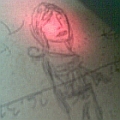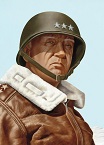Anthropoid
Posts: 3107
Joined: 2/22/2005
From: Secret Underground Lair
Status: offline

|
Damn you guys are so _mean_ 
Seriously though, if you accept that it is more toward the "simulation of real life warfare dynamics at the theatre scale" end of the continuum and less toward the "game" end of the continuum, and also give yourself plenty of "practice" play, in which you get into the proper habits of checking, double-checking, triple-checking, going back through your entire list of military assets one more time just to make sure before you hit "end turn" . . . in my experience (much more playing WiTP and War Plan Orange), you will occasionally get totally surprised by the AI and it feels "real," but if you plan well and execute well, you can achieve stunning tactical victories, even in situations where you are at a relative disadvantage.
I'm just getting back into the game and both relearning what I had forgot about the overall WiTP/WiTPAE engine as well as learning all the newer stuff in AE (which is phenomenal!) so I have yet to have that "birds eye view" intuition again yet.
But I can recall many instances back in WiTP or WPO where I positively smashed the AI, and once you start to get some of these, the little losses and failures are almost like sweetener.
I seem to recall one battle or string of battles against the AI in the Rabaul area. He was trying to move up a large invasion force and I had a lack of naval airpower in the area. What I did have however was plenty of patrol planes quite a few land based fighters and an over-abundance of level bombers, pilfered from Philippines. I also had quite a lot of DDs CLs CAs and SSs.
For several days I was keeping pretty good track of where his major troop transports, CVs, etc were located as they progressed south toward his forward base.
Make a long story short, I ambushed him with a combination of submarines and level bombers, knocking out a good chunk of his naval air cover, I then bombarded the living heck out of his airfields that were in range, and *poof* his invasion fleet had no air cover.
Now in came the "little" ships  . The details are fuzzy, but suffice to say, if you put 10 or 12 Destroyers of comparable class (same speed mainly but other factors may be of importance too), with crews that have had some chance to train up, and captains who are veritable bulldogs, you can do a LOT of damage in hit-and-run attacks on amphibious task forces and their escorts. . The details are fuzzy, but suffice to say, if you put 10 or 12 Destroyers of comparable class (same speed mainly but other factors may be of importance too), with crews that have had some chance to train up, and captains who are veritable bulldogs, you can do a LOT of damage in hit-and-run attacks on amphibious task forces and their escorts.
In sum, the game(s) are not retarded. They are excruciatingly detailed, and nauseatingly complex, but these 'disgusting' elements to us newcomers are precisely what makes the game(s) great: it is only by modeling the myriad contingencies and contextual factors of this complex 20th century form of warfare that the game truly allows players to explore the full range of strategy and tactics. There are seemingly infinite permuations of ways to victory thanks to the detail and complexity, and the real joy of the game comes in (a) coming to a sufficient understanding of the 'ecology' portrayed in it to develop 'hypotheses' about viable strategy and tactics; and (b) sticking with it long enough to build up the various logistical and organization states necessary to effectively execute such strategies; (c) seeing them unfold and watching dozens of enemy ships and planes going down and up in flames! 
Getting to that point takes a long time, but it is a lot of fun.
_____________________________
|
 Printable Version
Printable Version












 . The details are fuzzy, but suffice to say, if you put 10 or 12 Destroyers of comparable class (same speed mainly but other factors may be of importance too), with crews that have had some chance to train up, and captains who are veritable bulldogs, you can do a LOT of damage in hit-and-run attacks on amphibious task forces and their escorts.
. The details are fuzzy, but suffice to say, if you put 10 or 12 Destroyers of comparable class (same speed mainly but other factors may be of importance too), with crews that have had some chance to train up, and captains who are veritable bulldogs, you can do a LOT of damage in hit-and-run attacks on amphibious task forces and their escorts. 
 New Messages
New Messages No New Messages
No New Messages Hot Topic w/ New Messages
Hot Topic w/ New Messages Hot Topic w/o New Messages
Hot Topic w/o New Messages Locked w/ New Messages
Locked w/ New Messages Locked w/o New Messages
Locked w/o New Messages Post New Thread
Post New Thread